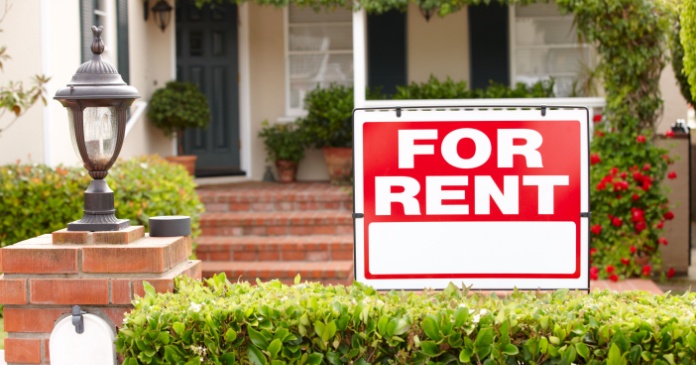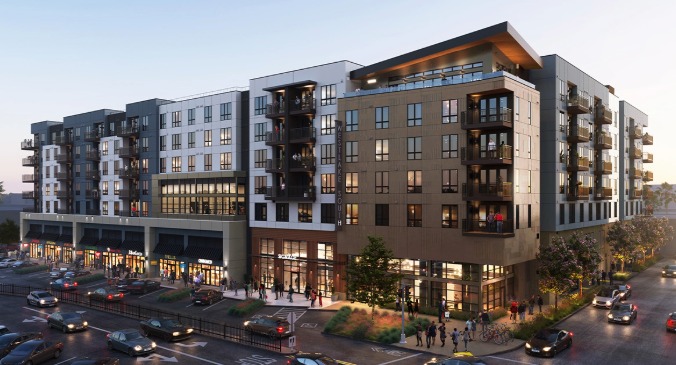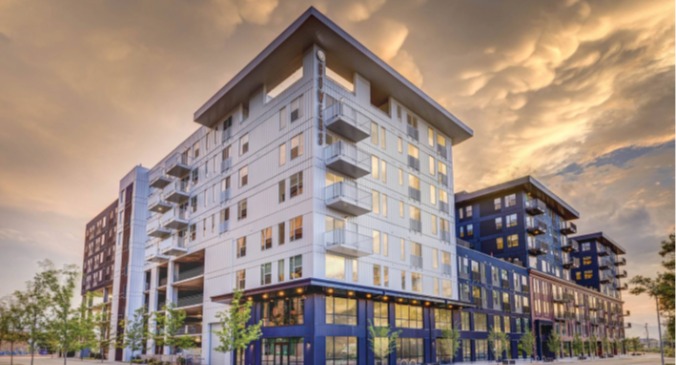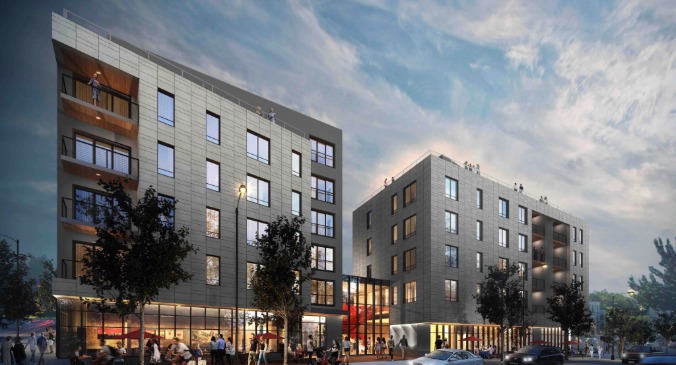
The mainly bi-coastal apartment REIT broke ground for two new apartment projects in Q4 2009. The 219-unit, $36 million second phase of Avalon Northborough, in a suburb about 22 miles west of Boston got underway in October, followed by the start of the 180-unit, $30 million Avalon West Long Branch in West Long Branch, N.J.
Both markets represent safe havens for the REIT that was born in 1998 of the marriage of East Coast-focused Avalon Properties, Inc., and Bay Apartment Communities on the country’s western shore and today owns or holds interest in 172 apartment communities containing 50,114 units in 10 states and the District of Columbia.
“Clearly, in some markets, development doesn’t underwrite. In some markets, there is significant discount to replacement cost to buy assets. There are sub-markets, however, where yields are above cap rates,” said AvalonBay President Tim Naughton during the REIT’s September earnings call, pointing to the New Jersey and Boston locations where the REIT broke ground late last year.
“For both of those deals we are looking at initial yields somewhere around the eight percent range, where cap rates would trade in those markets somewhere certainly sub-seven percent,” said Naughton, who puts Boston and Washington, D.C., together at the top of the hierarchy of AvalonBay’s markets.
“With these two starts, the amount of construction we’ll have underway by year-end ’09 will still be roughly half of what was underway at year-end 2008,” AvalonBay CEO Bryce Blair said, during the company’s Q3 2009 earnings conference call, when the REIT had around 3,400 units underway in nine communities from coast to coast. AvalonBay had 6,800 units under construction in 21 communities, spread from California to Massachusetts at the end of 2007.
Given the extraordinary weakness in the economy and the capital markets, the REIT decided, at the end of 2008, to take a break from new development starts until the end of last year. Now, given some improved clarity on the economic front, reduced construction costs and significant firming of the capital markets, some development opportunities are becoming attractive and a modest level of new development activity is warranted, Blair said.
He expects reduction in construction costs to continue into 2010, and increase as the economy strengthens and apartment building activity resumes.
Today the company is seeing construction costs at about 15 percent below what AvalonBay spent to build the 216-unit, $41 million Avalon Tinton Falls in New Jersey that broke ground in Q2 2007 and was completed in Q4 2008 and the 163-unit, $27.4 million first phase of the Northborough deal that started in Q4 2008 and was completed a year later. Both experienced healthy lease-ups in the range of 25 to 30 units per month, with rents that were around pro forma.
The decision to break ground on Avalon Northborough’s second phase this year was prompted not only by Beantown’s good position in the recovery scenario the REIT envisions, but also the expected return on cost for the deal, compared to virtually every other new business opportunity for the REIT in the region, explained Sr. VP Bill McLaughlin, who oversees AvalonBay’s development and construction throughout the Northeast, including all of New York City and Long Island.
“We owned the land, we had the infrastructure in place, we had the amenities in place, so, as you can imagine, the incremental investment to be made in the second phase was pretty attractive,” he said in January.
When Northborough was approved, it was entitled as a single project, but, as the economy began to fall apart, the 350-unit community that AvalonBay predicted two years ago would cost $61 million to build, was divided into two phases. The 163-unit first phase was one of the REIT’s last development starts before the year-long building lull that was mirrored by virtually every other savvy apartment investor as the country’s financial health deteriorated. The only other new development start for the REIT as ground-breakings ground to a halt at the end of 2008, was the 396-unit Avalon Towers in Bellevue, Wash., on the other side of the country.
“The economy was a pretty scary place, but we had momentum. We considered delaying the entire Northborough project, but we were able to achieve some savings in our construction costs, as a result of the fact that work had quieted down for most everyone,” McLaughlin said.
The company decided to phase the Northborough project that was designed by Niles Bolton Associates just as the site work was beginning and before any concrete was poured. “We were doing the infrastructure work—the roadways, the utility work, the site development work. It was one of the last jobs we started and the second phase turned out to be one of the first jobs to start after the break,” McLaughlin recalled.
“We got a very good buy on the first phase, from a hard cost perspective, so we were able to convince ourselves that 163 homes was a good, digestible chunk to deliver at one time,” he said.
Absorption went remarkably well at the first phase of the East Coast community that is set on 33 acres, 25 miles west of the city, and is the residential component of The Loop, a 150-acre, one-million sq. ft., mixed-use development destined to include a 650,000 sq. ft. open-air retail center that will be home to the area’s first Wegmans supermarket. Avalon Northborough’s first phase was more than 95 percent leased by November.
That phase includes a fully-equipped fitness center, swimming pool, resident lounge with billiards, landscaped courtyards, barbecue area and a tot lot. The one-, two- and three-bedroom apartments and town homes with optional lofts and dens feature gourmet kitchens with contemporary cabinetry and energy-efficient black appliances, full-size washers and dryers, spacious walk-in closets and private decks or patios available for most of the units that range in size from 651 sq. ft. to 1,832 sq. ft.
When it came time to crank up development again, Northborough’s second phase was a no-brainer. “We had the staff in place, we had the design, we had the permits, we were ready to go and sort of chaffing at the bit, given the hiatus we had taken from starts,” he said, adding that the reasonable cost of building wood-frame garden-style apartments in the suburbs reduces risk even further.
The timing couldn’t have been better. Northborough’s second phase, one of the first to break the ice, as thawing capital markets warmed the hearts of investors, also will deliver during Boston’s prime leasing season. “So, rather than having any big deliveries during the winter months, breaking it into the two phases has really allowed us to match deliveries with absorption,” McLaughlin said.
And it also made possible the addition of 32 town homes to the project on an eight-acre piece of land adjacent to the originally entitled property, purchased after the initial permitting process was complete, from a neighbor who wanted a buffer between his property and the new development.
“We were able to talk to the town about enhancing our approvals by adding 32 town homes and we got conditional approval for those rental town homes,” said McLaughlin, adding that his team connected the additional piece of the community to the infrastructure and connected the roadway, expanding the program with ease.
“We were fortunate. We started the second phase in October, but because we had so much of the site development work, utility work and grading work done when we were doing the first phase, we were pretty quick to get concrete in the ground,” said McLaughlin. Completion of Avalon Northborough, which is 25 percent affordable to households with incomes of 80 percent of the area median income or less, is expected by the end of this year.
Currently, the REIT, owns or has interests in around 7,000 units in 25 apartment communities in the Boston area, which showed the second smallest year-over-year drop in average rents from Q3 2008 to Q3 2009—down just 1.1 percent to $1,962 from $1,983 the year before—in any of the REIT’s 15 markets. Only Metro Washington, D.C. rivaled Boston in rent stability, falling just 0.02 percent by Q3 2009 to $1,741 from $1,745 a year before.
The D.C. market is home to 5,787 same store AvalonBay apartments, the most same store units the REIT had in any of its 15 markets as of the end of September, with Boston coming in second and the rest of the New England market’s 2,518 units in Connecticut and Rhode Island vying for third place with San Jose, in terms of numbers of same store units.
The New England market generates nearly 21 percent of the REIT’s NOI and is home to around the same percentage of the apartments in the REIT’s nationwide portfolio, the lion’s share in Beantown.
“Boston had pretty significant new multifamily supply for most of the past decade, but when we stopped building through most of ’09, so did virtually everyone else,” he said, noting that only 500 multifamily permits were issued in the entire state in the second half of 2009. “We had 219 of them out at Northborough, so the whole rest of the Commonwealth issued something like 280 permits. And that’s down from 8,000 to 9,000 for the last several years,” he said.
“The story for 2011 and 2012 is going to be one of really limited supply,” said McLaughlin, adding that, if the economy improves in a year or so, generating job creation and household formation, there will be very few new apartments in the Boston area to compete with Northborough’s second phase, when those 219 units are ready for lease-up.
Author Peggy Shaw















